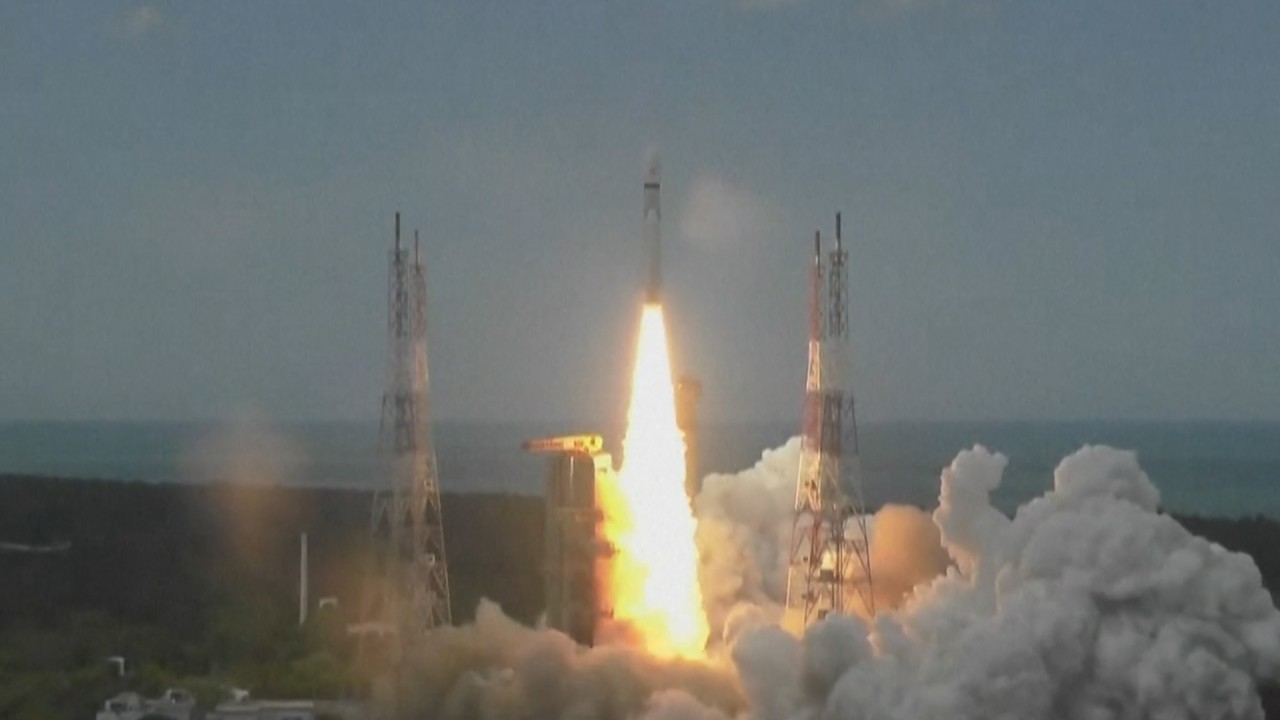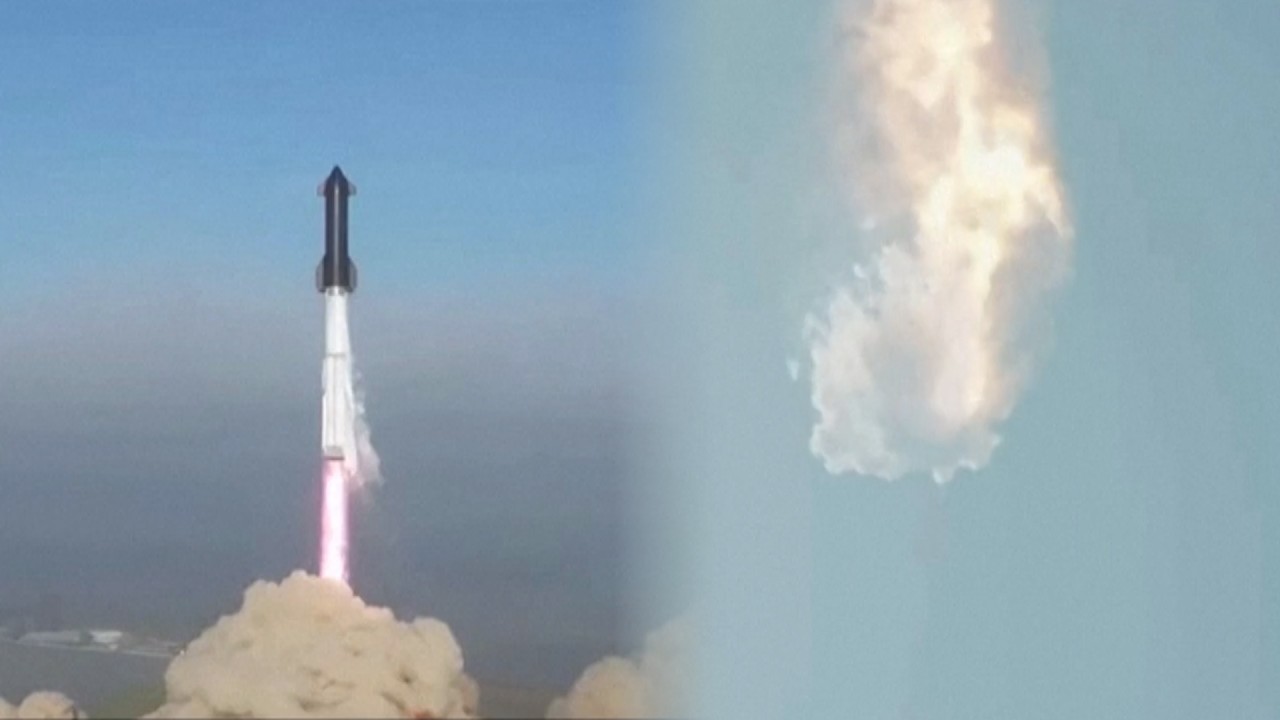
Nasa chief warns moon’s south pole may become ‘another South China Sea’
- Bill Nelson says Chinese astronauts could occupy the lunar region ‘like the Spratly Islands’ if US is beaten in new space race
- Both countries aim to establish permanent bases at the moon’s south pole, which is expected to hold water ice
“Naturally, I don’t want China to get to the south pole first with humans and then say ‘this is ours, stay out’, like they’ve done with the Spratly Islands.”
Manila, with Washington’s backing, and Beijing are in an escalating war of words over the Spratlys – a large group of reefs, shoals, atolls and small islands in the South China Sea that are also claimed by Malaysia, Vietnam and Brunei.
According to Nelson, the US and China are in a race to see who can be first to gain access to the water ice believed to be trapped at the lunar south pole.
“We need to protect the interest of the international community … If indeed we find water in abundance that could be utilised for future crews and spacecraft, we want to make sure that that’s available to all, not just the one that’s claiming it.”
Why is a rusty old Philippine warship involved in the South China Sea dispute?
He said potential sites for landing and utilising resources at the moon’s south pole were limited, with a very different landscape to the region selected for previous landings.
“If you look at pictures of the south pole, it’s not like what you saw where Neil [Armstrong] and Buzz [Aldrin] were landing, constantly lit from the sun and a few craters here and there,” Nelson said.
“The south pole of the moon is pockmarked with deep craters … Because of the angle of the sun coming in, most of those craters are in total darkness the entire time, which lessens the amount of the area you can actually land on and utilise.”
But space policy expert Brian Weeden, programme planning director at US-based think tank the Secure World Foundation, said the US and China “don’t necessarily need to be in competition”.
“It’s not a race, because it’s not just the US and China that are going to the moon. Lots of countries are going there for different reasons,” he said.
China reveals first details of crewed moon landing mission by 2030
Weeden said the moon’s south pole was a big place, with plenty of room for multiple parties to explore. “Nelson is correct about some smaller areas being limited, but we’re still talking tens of kilometres in size.”
He rejected the idea that whoever got there first “wins” a race. “The thing is, no matter who gets to the moon first, other countries are not going to stop going there,” Weeden said.
China has been working on the development of launch vehicles and spaceships, among other equipment, for its long-stated goal to land Chinese astronauts on the moon by 2030.
The China-led International Lunar Research Station and the US Artemis programme both aim to establish a long-term base with a human presence at the moon’s south pole region.
Meanwhile, Russia and India are competing to be the first country to land an un-crewed mission at the lunar south pole. Both Luna 25 – the first Russian moon mission in nearly 50 years – and India’s Chandrayaan 3 are expected to touch down around August 23.
On Tuesday, Nelson dismissed Russia’s role as a competitor in the new race for space, despite the Luna 25 launch planned for this week. He questioned Russia’s readiness “to be landing cosmonauts on the moon” before 2030.
Nasa also outlined progress on its planned Artemis II mission to send four astronauts to orbit the moon, which officials said was on track to launch in late November next year.
However, Jim Free, the agency’s associate administrator for exploration systems development, said US plans to return astronauts to the moon in 2025 may be postponed, with “a key element” still missing – SpaceX’s Starship vehicle.
There are concerns over whether the Texas-based company’s heavy launch rocket will be ready in time for the mission. Free said if Starship was not ready, Artemis III still looked to fly in late 2025, but might not involve a human landing.
According to Weeden, a much more important question than the competition between countries to get to the moon is whether they share the same interpretation of international law, since existing space treaties often have very broad principles.
So far, 28 countries have signed the US-led Artemis Accords, which have caused controversy with a provision that countries and companies can extract and utilise resources and create “temporary safety zones” to protect their interests.
Nelson said the accords were for the peaceful and cooperative uses of space.
China, US space rivalry ‘may heat up’ after Nasa’s Artemis Accords signed
But China – which is excluded from signing the accords – and Russia, as well as a number of other countries, have expressed concerns about the potential for the agreement to limit their lunar activities.
The accords operate under the auspices of the Outer Space Treaty, which has been adopted by more than 110 space-faring nations.
However, while the treaty stipulates that no state has the right to claim territories on the moon, it does not specify how the non-appropriation principle applies to space resources – such as the right to extract, own, and use lunar water ice.
In Weeden’s view, there is a market in the US for the theory of a “moon race”, partly because of China’s rapid rise as a space powerhouse.
“For the longest time, the US thought it was way ahead of China in space technologies. That’s not true any more. The relative advantage is narrowing, and people worry it might shrink to zero one day,” he said.
According to Weeden, there are also concerns that China – just like the US – has been using its space capabilities as a “soft power” to sway other countries and build global influence.
He said this had included invitations to partners to carry out scientific research and send their astronauts on missions to the orbiting Tiangong space station.
Weeden said that, even more importantly, a competitor could be used to attract attention and funding – as witnessed during the Cold War between the US and the Soviet Union.
“It helped generate a lot of political buy-in and money to go and do space things,” he said, referring to the original race to land on the moon.



